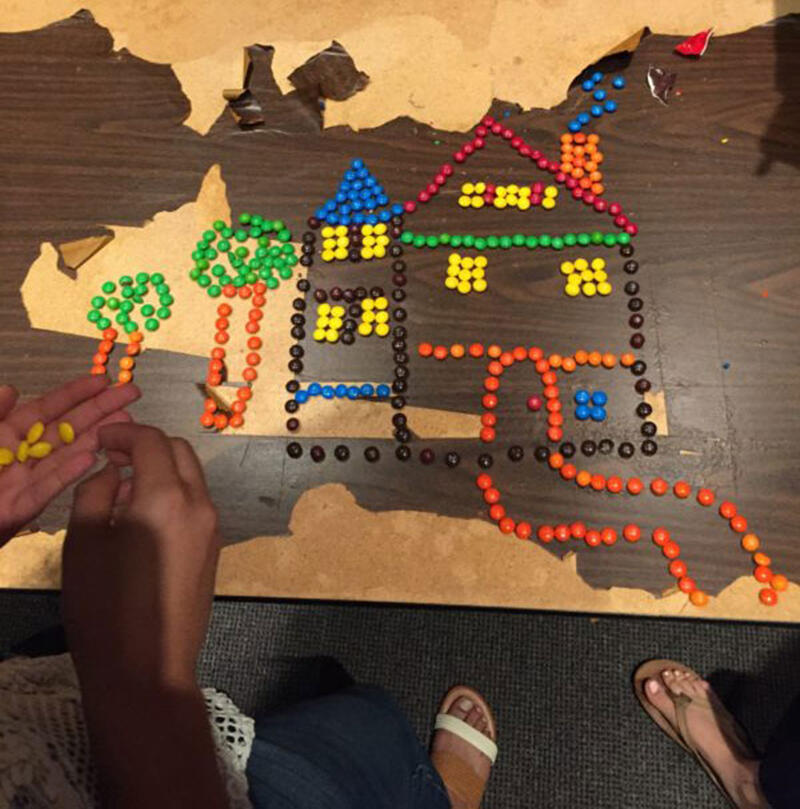The Myers-Briggs Type Indicator (MBTI) is a useful instrument for illustrating and appreciating differences between each other (though not scientifically sound). One of my favorite activities is demonstrating this to naysayers who equate MBTI to astrology, so here’s a simple team building activity you can use when your unit is in need of something lighthearted. To avoid spoiler alerts, I’m not including photos, but am happy to share some examples from the many times I’ve done this on campus, if you email me.
Firstly, all participants will need to know their MBTI (e.g. INFJ, ISFJ, ESFJ, etc.), so before you meet, have them complete one of the two quick, simple online assessments I’m providing. In my experience, one of the best things you can do to facilitate team building, is to provide opportunities for individuals to get to know each other, as humans. When people truly get to know each other, then “that guy who always forgets headers in his Excel doc” becomes “Jason, the guy who outputs twice as many reports as me despite having two jobs, volunteering, and taking care of his elderly Mother on the weekends.” The more we authentically share, the more common ground we find, and it becomes difficult to abstract someone away as a cog performing a process. While doing activities like this, try to provide moments where people can share with one another.
For this activity, you will need:
- 2 party size bags of plain M&M’s for each team of 4-5 people
- Every participant’s Myers-Briggs Type (MBTI)
- Optional handouts explaining MBTI & specifically the “P” and “J” letters
First, provide a brief overview of the MBTI and why it’s so popular. I have several activities for each part of the MBTI, as well as a powerpoint I commonly use when presenting to groups, so feel free to reach out if you’d like to utilize them. This activity specifically illustrates differences between the Perceiving (P) and Judging (J) types. In short, Judging (J) types look at their environment and see decisions to be made. They tend to prefer structure, deadlines, and are more comfortable with routine and clear expectations. In contrast, Perceiving (P) types look at their environment and see things to experience and explore. They tend to prefer open-ended situations, are not in love with deadlines, and are more comfortable with uncertainty and general guidelines. Because we live in a “J” world, it’s easy for “P” types to be dismissed, so hopefully (but not always) this activity will show how differently we approach tasks, as well as how we can leverage our differences to achieve greater results.
After providing the MBTI overview, separate people into three types of groups: A group of “P” types; a group of “J” types; and a blended group of both “J” and “P” types. There should be 4-5 people in each group, and depending on the size of your team, you can have multiple of each type of group. Don’t tell people what determines which group they’re in, though they may figure it out on their own.
After dividing everyone into groups, explain their simple task: They have 10 minutes to create a two-dimensional house out of the M&M’s you provided to each group. It’s that easy. While the groups are working, you may want to walk around and take pictures of the process so you can share with everyone later.
Announce when time is up, and check to see if everyone is done. If there is a group that hasn’t finished, it’s likely a “P” group. Give everyone an opportunity to walk around to see what other groups built. Feel free to ask the following questions:
a) Do any houses seem similar? Which ones? (usually “J” groups)
b) Are any homes particularly unique? Which one(s)? (usually “P” groups)
c) Which house do you think is the best? Why? Optional: You can have them vote on their favorite. (often the blended “J” and “P” groups, but not always)
d) How do you think the groups were selected? Why?
e) Ask if anyone would like to share their experience or what they learned.
Things to look out for (spoiler alert):
- Color-coordinated homes may be either “P” or “J” groups, but more often “J” groups.
- Non-color-coordinated homes will almost always be “P” groups.
- Often, but not always, the most creative homes will be “P” groups.
- Often, but not always, the “best” homes will be the blended groups of both “J” and “P” types.
If you’re fortunate enough to have the “best” home be from a blended group of “J” and “P” types, you can use the opportunity to discuss how diversity can contribute to better outcomes. It’s likely the blended groups also had more difficulty working together, and this often occurs when people are different.
Free, online assessments for MBTI: http://www.humanmetrics.com/cgi-win/jtypes2.asp
Takes approximately 15-20 minutes, and tends to be more accurate: https://www.16personalities.com/free-personality-test Takes 10 minutes or less, but may not be as accurate.



